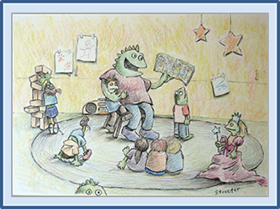Overview
Role of literatureThe study of English from Kindergarten to Year 10 should develop a love of literature and learning and be challenging and enjoyable. Through responding to and composing texts from Kindergarten to Year 10, students learn about the power, value and art of the English language for communication, knowledge and enjoyment. They engage with and explore texts that include widely acknowledged quality literature of past and contemporary societies and engage with the literature and literary heritage of Aboriginal and Torres Strait Islander peoples. By composing and responding with imagination, feeling, logic and conviction, students develop understanding of themselves and of human experience and culture. They develop clear and precise skills in speaking, listening, reading, writing, viewing and representing, and knowledge and understanding of language forms and features and structures of texts.
|
Choosing textsThe choice of particular texts is not mandated in the new English K−10 syllabus. The syllabus requires students in each year of each stage to study a wide range of texts appropriate to their needs, interests and abilities. ©Image courtesy of adamr/ FreeDigitalPhotos.net Playing with texts F-2 (Scootle Resource M019077) Using digital and multimodal texts. Scootle resource- MO13889.Exploring new text requirements K−10 provide a range of resources and strategies to build teacher capacity to teach media, multimedia and digital texts in the context of the English K−10 syllabus.
|



